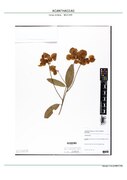GLAM/Newsletter/October 2024/Contents/Brazil report
|
Amazon holotypes: how the species were discovered

At the image: Domingos Soares Ferreira Penna, a Brazilian naturalist, who founded the Museu Paraense Emílio Goeldi.

As we told in our August 2024 report, Wiki Movimento Brasil is the main organizer of the project "Amazonian Knowledge on Wiki" with funding from Creative Commons and Wikimedia Switzerland. It aims to disseminate information about the biodiversity of the Pará Amazon. The collections, especially those related to biodiversity, emphasize the crucial role of open knowledge in preparation for COP-30, which will be held in Belém in 2025.
The first deliverable of the project took place on August 22, 23, and 24, in an innovative event that brought together 20 geoscience professionals for the Open Mapping and Documentation of the Zoobotanical Park of the Museu Paraense Emílio Goeldi.

The second deliverable is the ongoing Wiki Contest Climate Justice and the Amazon, an initiative aimed at improving and expanding content about the Amazon and issues related to climate justice on the Portuguese Wikipedia. The contest is dedicated to the Amazon region and topics related to the agenda of the United Nations Conference on Climate Change (COP-30) and the Sustainable Development Goals (SDGs). We encourage the creation and improvement of articles on sustainability, climate change, Indigenous peoples' rights, environmental policies, biodiversity, and other essential topics for the preservation of the Amazon and the fight against the climate crisis. Contest period: October 9 to November 30.
The third deliverable is the upload of the herbarium collection of The Museu Paraense Emílio Goeldi (MPEG) available at REFLORA platform. The 10,684 uploaded images depict over 1,800 species of plants. 1,121 of those species now have their first image thanks to this collection (i.e., now they have a P18 on Wikidata).
![]() See the Amazonian Knowledge on Wiki's images and all the uploaded images from Museu Paraense Emílio Goeldi herbarium.
See the Amazonian Knowledge on Wiki's images and all the uploaded images from Museu Paraense Emílio Goeldi herbarium.
Holotypes
Have you ever heard about Holotype?
| A holotype (Latin: holotypus) is a single physical example (or illustration) of an organism used when the species (or lower-ranked taxon) was formally described. It is either the single such physical example (or illustration) or one of several examples, but explicitly designated as the holotype. Under the International Code of Zoological Nomenclature (ICZN), a holotype is one of several kinds of name-bearing types. In the International Code of Nomenclature for algae, fungi, and plants (ICN) and ICZN, the definitions of types are similar in intent but not identical in terminology or underlying concept.
A holotype is not necessarily "typical" of that taxon, although ideally it is. Sometimes just a fragment of an organism is the holotype, particularly in the case of a fossil. For example, the holotype of Duriatitan|Pelorosaurus humerocristatus (Duriatitan), a large herbivorous dinosaur from the early Cretaceous period, is a fossil leg bone stored at the Natural History Museum in London. Even if a better specimen is subsequently found, the holotype is not superseded. Source: en.Wikipedia. |
For example, the holotypes for some of the Amazonian rainforest and Atlantic Forest are shown below. They are preserved specimens of their species, held by two great Brazilian institutions, each one safeguarding an amazing and under-risk biome:
1. Museu Paraense Emílio Goeldi (Amazonian rainforest) - uploaded for this project
-
Brazil's Legal Amazon represents 59% of the national territory
-
ALISMATACEAE Sagittaria amazonica
-
ANNONAECAE Diclinanona matogrossensis
-
DILLENIACEAE Davilla lanosa
-
MARANTACEAE Calathea aberrans Huber
2. Instituto Nacional da Mata Atlântica (Atlantic Forest) - uploaded between 2022 and 2024
-
The state of Espírito Santo is home to 32% of the native species of the Atlantic Forest
-
BEGONIACEAE Begonia rubriflora
-
GESNERIACEAE Codonanthe gibbosa
-
MELASTOMATACEAE Pleroma costatocalyx
-
ORCHIDACEAE Pabstiella pseudotrifida
![]() See the holotypes from Museu Paraense Emílio Goeldi uploaded on Commons.
See the holotypes from Museu Paraense Emílio Goeldi uploaded on Commons.
![]() See the Instituto Nacional da Mata Atlântica's GLAM page and the uploaded holotypes.
See the Instituto Nacional da Mata Atlântica's GLAM page and the uploaded holotypes.
- Albania report
- Brazil report
- Canada report
- Colombia report
- Italy report
- Kosovo report
- Latvia report
- Netherlands report
- New Zealand report
- North Macedonia report
- Poland report
- Spain report
- UK report
- USA report
- Biodiversity Heritage Library report
- AvoinGLAM report
- Memory of the World report
- Wikidata report
- Calendar
| Home | About | Archives | Subscribe | Suggestions | Newsroom |


















